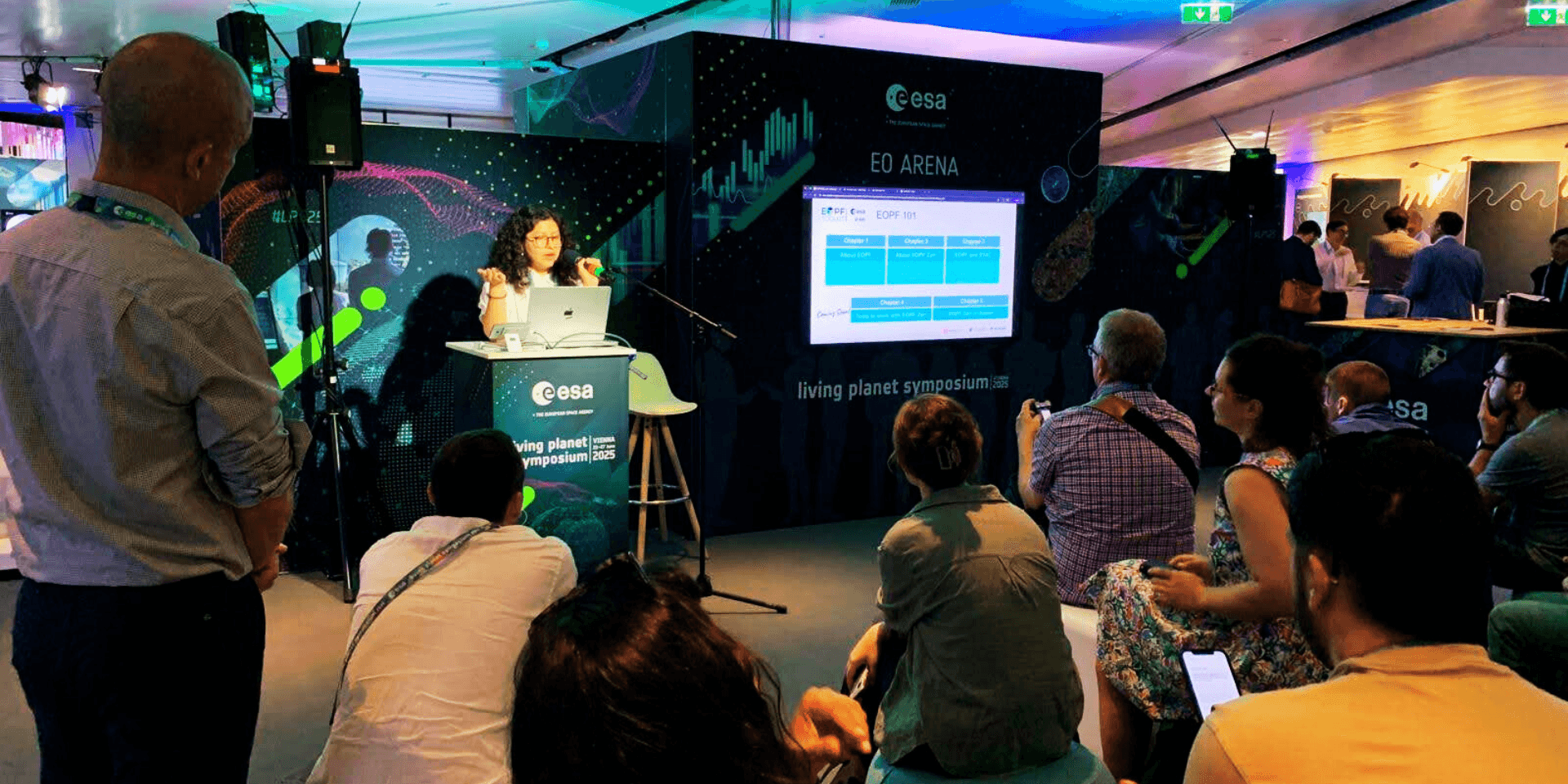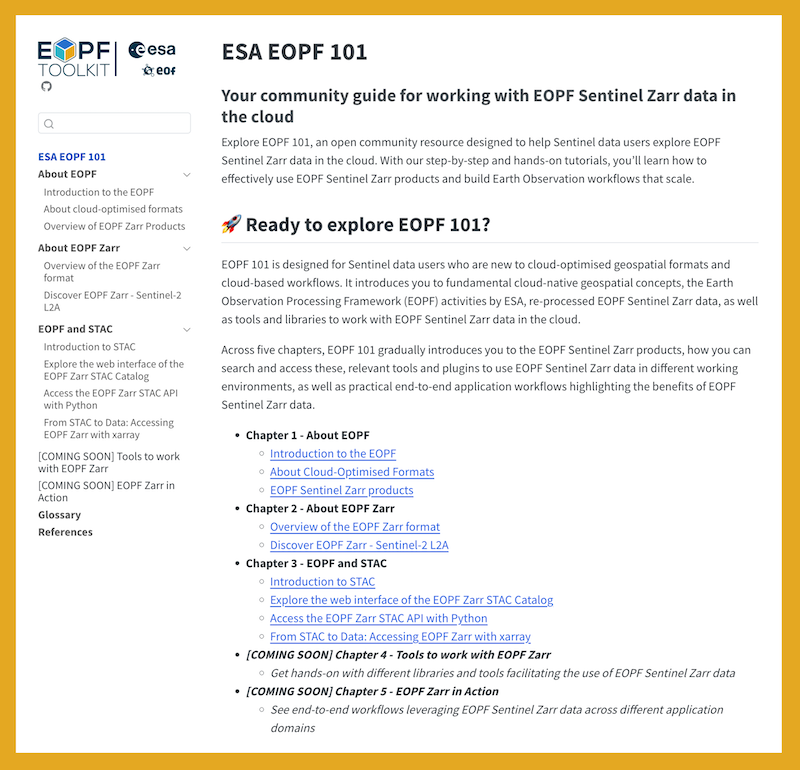EOPF 101 is a hands-on guide to working with Sentinel data in the cloud. Learn how to explore, analyze, and apply Zarr-based products using open tools and workflows.

Earlier this year at the Living Planet Symposium, we previewed a new resource designed to help users work with Sentinel data in the cloud. Today, it’s live.
EOPF 101 is an open, modular guide to the ESA Earth Observation Processing Framework (EOPF). Built around the Zarr format and STAC metadata, EOPF 101 shows how to access, navigate, and analyze Copernicus Sentinel data using cloud-native tools and workflows. Whether you're just starting out or modernizing existing systems, EOPF 101 was created to help.

EOPF 101 will give you the skills you need to work with Sentinel data in the cloud.
Developed as part of the ESA-funded EOPF Toolkit project, EOPF 101 is a collaboration between Development Seed, thriveGEO, and SparkGeo. We all bring deep expertise in cloud computing, geospatial analysis, and community engagement. Open source is at the core of everything we do.
Why Cloud-Native, and Why Zarr
Legacy formats like Standard Archive Format for Europe (SAFE) made it hard to use Sentinel data in scalable, cloud-based workflows. Zarr changes that. As an open-source format for chunked, N-dimensional arrays, Zarr makes it possible to read just the data you need without downloading entire datasets.
This architecture supports parallel processing and streaming access, and works seamlessly with cloud object storage. With metadata embedded directly in each dataset, Zarr simplifies both discovery and interpretation. At the Living Planet Symposium, our demos showed how much faster and more flexible this approach can be in practice.
For anyone frustrated by the limits of traditional formats, Zarr represents a major step forward in usability and performance. But if you are new to Zarr, don't fear! That is exactly why we created EOPF 101.
What You’ll Learn
EOPF 101 is organized into five chapters—each designed to help you understand and apply cloud-native workflows using Sentinel data.

EOPF 101 will give you the skills you need to work with Sentinel data in the cloud.
-
Chapter 1: Orientation
Understand EOPF and cloud-optimized formats across Sentinel-1, -2, and -3 missions. -
Chapter 2: Working with Zarr
Learn the format’s structure through hands-on examples with Sentinel-2 L2A products. -
Chapter 3: Discovering with STAC
Use the EOPF STAC interface and API to search and retrieve data. -
Chapter 4 & 5: Tools and Applications (Coming Soon)
Explore integrations, workflows, and real-world use cases.
All chapters include notebooks and examples you can run directly. Applied examples are designed to demonstrate a range of what is possible covering topics like wildfire monitoring, coastal change analysis and workflows for cloud-prone regions.
An ecosystem of tools and compute platforms
The EOPF ecosystem includes open tools for analysis, visualization, and integration:
- Stackstac for large-scale STAC-based analysis
- Titiler-multidimensional for fast, flexible visualization
- GDAL + Zarr drivers for traditional workflows
- Rarr (R package) for users working in R
- Julia Zarr IO package
All the EOPF Toolkit use cases are served with cloud data by the EOPF Sentinel Zarr Sample Service
which provides a set of sample datasets for each Sentinel mission.
This service also host a processing environment with JupyterLab that allows you to run the 101 notebooks via a simple click.

Notebook Competition
From October 2025 to January 2026, the EOPF team is hosting a community notebook competition. This is a chance to test what you learn, share your work, and get feedback from the team behind the toolkit.
Whether you're exploring a new use case, building an analysis pipeline, or visualizing something novel, this is a great entry point into cloud-native EO.
Ready to Explore?
The EOPF ecosystem is evolving. More chapters are on the way, alongside new tools, plugin integrations, and user-driven contributions. The team is working on expanded documentation, additional workflows, and deeper support for specific domains.
This is a shared resource, and your input matters. If you have ideas, feedback, or tools to contribute, we’d love to hear from you.
EOPF 101 is your starting point for working with Sentinel data in the cloud.
- Start exploring EOPF 101
- Join the notebook competition
- Learn more about the EOPF Toolkit
What we're doing.
Latest
